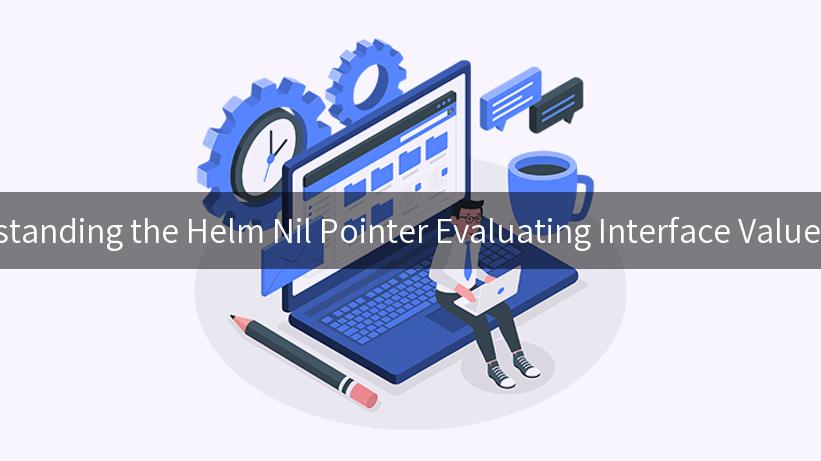
When working with Kubernetes and Helm, developers often face various errors that can interrupt the deployment process and hinder productivity. One such error that has gained traction in the Helm community is the “nil pointer evaluating interface values” error. This article aims to provide a comprehensive understanding of this error while also exploring its relation to API gateway configurations and management tools such as AWS API Gateway, AI Gateway, and API Documentation Management.
Table of Contents
- What is Helm?
- Common Helm Errors
- Understanding the Nil Pointer Error
- Causes of the Nil Pointer Evaluating Interface Values Error
- Impact on API Management
- Best Practices for Preventing Nil Pointer Errors
- Resolving Nil Pointer Errors
- Conclusion
What is Helm?
Helm is a popular package manager for Kubernetes, designed to facilitate the deployment and management of applications on a Kubernetes cluster. By using Helm charts, developers can define, install, and upgrade applications easily. Helm brings an invaluable level of automation and convenience to Kubernetes management.
Common Helm Errors
While Helm streamlines many tasks, it is not without its errors. Some of the most common Helm errors include:
– Chart not found: The specified chart could not be located.
– Failed to fetch: Helm was unable to download the required chart.
– Release already exists: Attempting to install a chart that has already been deployed.
These errors may arise due to misconfigurations, network issues, or incorrect command usage. The “nil pointer evaluating interface values” error is among them but is less commonly understood.
Understanding the Nil Pointer Error
The “nil pointer evaluating interface values” error generally occurs when Helm encounters a nil pointer while trying to evaluate or access a value in a template. This can manifest in various ways but ultimately indicates that the code is attempting to dereference a nil value, which leads to a runtime panic.
A basic Helm chart can look like the following:
apiVersion: v2
name: example-chart
description: A Helm chart for Kubernetes
values:
key: value
If the template attempts to access a value that has not been defined, it may lead to this nil pointer error.
Causes of the Nil Pointer Evaluating Interface Values Error
-
Missing Values in values.yaml: If certain values expected by templates are not provided in the values.yaml or overridden during installation, this can lead to nil pointer dereferencing.
-
Template Logic Errors: Improper conditional checks that fail to ensure a value is present before attempting to use it can cause this issue.
-
Incorrectly Defined Dependencies: In complex charts that rely on dependencies, if those dependencies do not provide the expected values, it can trigger this error.
Here’s an example of template logic that can lead to the nil pointer error:
{{ if .Values.someMissingKey }}
{{ .Values.someMissingKey | default "Fallback Value" }}
{{ end }}
If someMissingKey is not defined, it will evaluate to nil and raise the error.
Impact on API Management
An API gateway, such as AWS API Gateway, plays a critical role in managing microservices and APIs efficiently. When deploying an API management scenario through Helm charts, encountering nil pointer errors can severely impact the functionality of API endpoints and their underlying services. Developers may struggle to deploy API gateways correctly, resulting in downtime or inaccessible services.
Table: Understanding API Gateways
| Feature |
AWS API Gateway |
AI Gateway |
| API Creation |
Yes |
Yes |
| Monitoring and Logging |
Yes |
Yes |
| Version Management |
Yes |
Limited |
| Authorization and Security |
Yes |
Advanced |
Best Practices for Preventing Nil Pointer Errors
-
Thoroughly Test Templates: Always run helm template to render the templates before deployment. This helps identify issues related to nil pointers.
-
Use Defaults: Implement default values for keys in values.yaml to ensure there is always a return value when accessing template keys.
-
Add Conditional Checks: Wrap value accesses in appropriate conditional logic to validate their presence.
-
Documentation and Comments: Clearly comment templates to indicate which values are expected, reducing the likelihood of errors.
Resolving Nil Pointer Errors
Fixing nil pointer errors often requires you to trace back through the Helm chart and identify where the nil value is coming from. Here’s a structured approach to resolving these errors:
-
Inspect values.yaml: Check the entries in your values.yaml and verify that required values are present.
-
Debugging with Helm: Run the Helm command with debugging flags such as --debug, which provides detailed insights into the rendering process.
helm install my-release my-chart --values values.yaml --debug
-
Modify Templates: Adjust the templates to ensure they do not attempt to access undefined values. Incorporate default value fallback mechanisms wherever feasible.
-
Consult Helm Documentation: Reference the Helm official documentation for further guidance on templating and best practices.
APIPark is a high-performance AI gateway that allows you to securely access the most comprehensive LLM APIs globally on the APIPark platform, including OpenAI, Anthropic, Mistral, Llama2, Google Gemini, and more.Try APIPark now! 👇👇👇
Conclusion
The “nil pointer evaluating interface values” error can be both frustrating and confusing for developers working with Helm. By understanding its causes and implications, particularly in the context of API management through tools like AWS API Gateway and AI Gateway, developers can better prepare to tackle this error head-on. Implementing best practices and troubleshooting techniques will not only resolve these errors but also enhance overall Kubernetes management efficiency.
With the evolving landscape of API services, being equipped with the right knowledge and tools ensures smoother deployments and management processes, ultimately contributing to the agility and scalability of applications in modern development environments.
By prioritizing API Documentation Management, developers can also minimize downtime and ensure compliance with best practices across their deployment processes.
In conclusion, even though Helm’s nil pointer errors can be a hindrance, addressing these issues through informed practices can set the groundwork for a robust, effective deployment strategy that supports the integration of various API gateways and services.